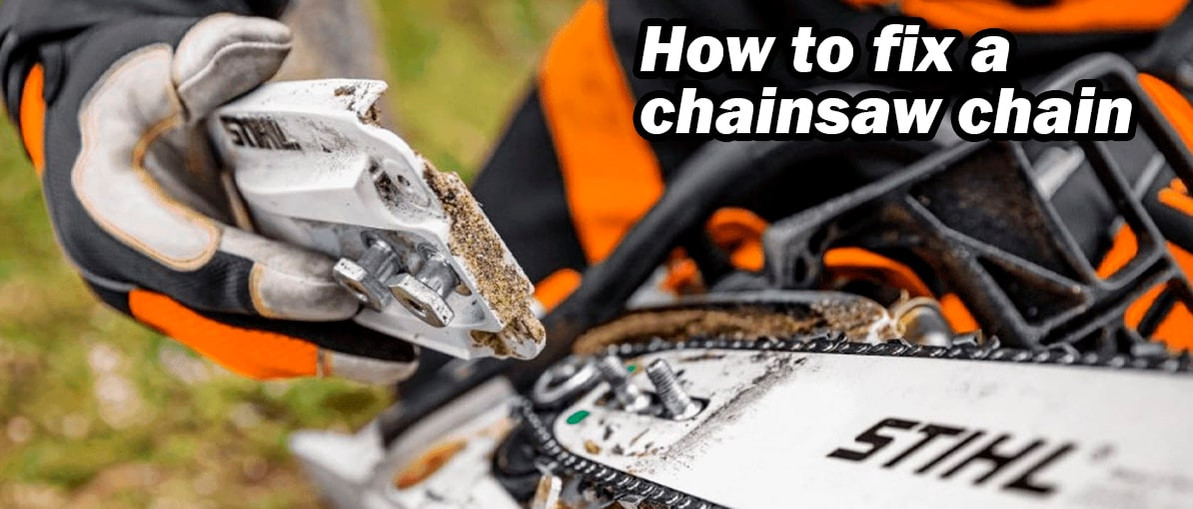How To Fix A Chainsaw Chain
Chainsaws are essential tools for anyone in the landscaping industry. They make tasks such as tree cutting, pruning, and firewood gathering much more manageable. However, like any other equipment, chainsaws require regular maintenance to function correctly. One common issue that chainsaw users encounter is a loose or damaged chain. Thankfully, fixing a chainsaw chain is a relatively simple task that can be done by anyone with the right knowledge and tools.
Understanding what you truly need
Before diving into the process of fixing a chainsaw chain, it's essential to understand the different components of the chain and how they work together. A chainsaw chain consists of several interconnected metal links that wrap around the guide bar. The chain is powered by the chainsaw's engine and is responsible for cutting through wood with its sharp teeth. Over time, the chain may become loose, dull, or even break, requiring immediate attention to ensure the chainsaw's optimal performance and safety.
- Safety First: As with any chainsaw maintenance task, safety should always be the top priority. Before attempting to fix a chainsaw chain, ensure that the chainsaw is turned off and that the engine is cool. It's also crucial to wear protective gear, including gloves, eye protection, and sturdy clothing to prevent any potential injuries.
- Assess the Damage: Carefully inspect the chainsaw chain to determine the extent of the damage. Look for any loose, broken, or damaged links. Additionally, check the tension of the chain by gently pulling it away from the guide bar. If the chain sags or comes off easily, it's a clear indicator that it needs adjustment or replacement.
- Chain Tension Adjustment: Most chainsaw models are equipped with a chain tensioning mechanism that allows users to adjust the tension of the chain. Refer to the chainsaw's manual to locate the tensioning screw or knob. Using the appropriate tool, such as a screwdriver or a wrench, tighten the tensioning mechanism until the chain snugly wraps around the guide bar without sagging. Be cautious not to over-tighten the chain, as it may lead to excessive wear and potential damage.
- Chain Replacement: In cases where the chainsaw chain is severely damaged or worn out, it's best to replace it with a new one. To replace the chain, carefully loosen the tensioning mechanism and remove the old chain from the guide bar and sprocket. Ensure that the new chain matches the specifications recommended by the chainsaw's manufacturer. Once the new chain is in place, adjust the tension as previously mentioned.
- Sharpening the Chain: A dull chainsaw chain can significantly impact cutting performance and efficiency. If the chain's teeth appear dull or worn, it's crucial to sharpen them using a chainsaw file or an electric chain sharpener. Follow the manufacturer's recommendations for the correct sharpening angle and technique. A sharp chain not only enhances cutting precision but also reduces the strain on the chainsaw's engine.
Considerations
When fixing a chainsaw chain, it's important to consider the type of chain and its compatibility with the specific chainsaw model. Chainsaw chains come in various sizes, pitches, and gauge measurements, and using an incompatible chain can lead to operational issues and safety hazards. Always refer to the chainsaw's manual or consult with a professional to ensure that the replacement chain meets the required specifications.
It's also worth noting that regular maintenance, including cleaning and lubricating the chain, guide bar, and sprocket, can prolong the lifespan of the chainsaw chain and enhance overall cutting performance. Additionally, being mindful of the cutting conditions, such as the type of wood and debris, can help prevent premature wear and damage to the chain.
Conclusion
In conclusion, knowing how to fix a chainsaw chain is an essential skill for any chainsaw user. By following the outlined steps and considerations, you can effectively address common chain issues and maintain the optimal functionality of your chainsaw. However, if you encounter complex chain problems or are unsure about the appropriate course of action, it's always best to seek assistance from experienced professionals.
At Chainsaw Parts, we are experts in the chainsaw parts industry, with over 50 years of experience in the landscaping industry. We offer a wide range of original replacement parts for chainsaw equipment, ensuring the highest quality and compatibility. Whether you need a new chainsaw chain, guide bar, or any other parts, our comprehensive inventory has you covered. Feel free to use our parts lookup to find the exact parts you need or contact us for any inquiries or assistance. Trust Chainsaw Parts for all your chainsaw part needs and experience the difference that quality and expertise make.
Recent Posts
-
How to Fix a Stretched Chainsaw Chain
When it comes to maintaining your chainsaw equipment, one of the common issues you may encounter is …Aug 21st 2024 -
How To Adjust The Idle On A Husqvarna Chainsaw
Adjusting the idle on your Husqvarna chainsaw is an essential maintenance task that ensures opt …Aug 7th 2024 -
How To Clean Chainsaw Filter
When it comes to maintaining your chainsaw, one of the most crucial tasks is cleaning the chai …Jul 31st 2024

